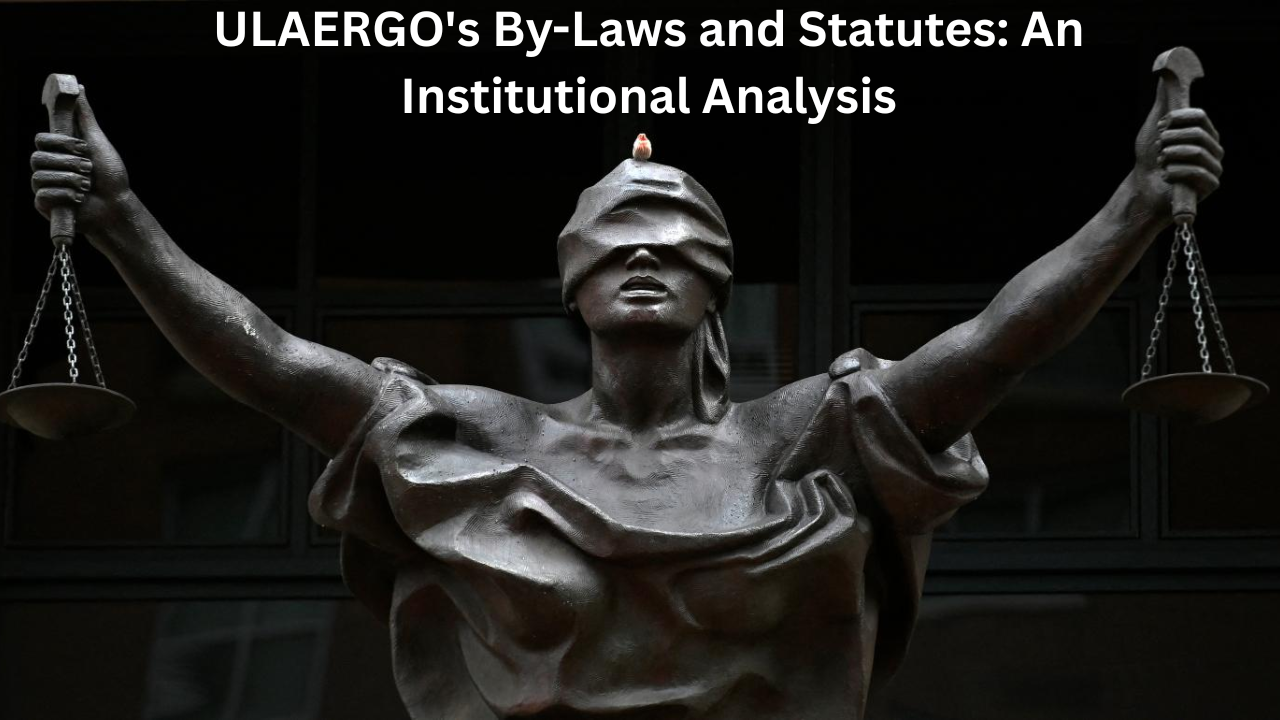
Introduction
The Union Latinoamericana de Ergonomía (ULAERGO), a key actor in promoting ergonomics across Latin America, owes much of its institutional stability and legitimacy to its by-laws and statutes. These foundational documents serve not only as legal frameworks but also as living blueprints for how ULAERGO operates, grows, and maintains cohesion across diverse national contexts.
In this article, we delve deep into ULAERGO’s by-laws and statutes—analyzing their structure, key governance components, legal implications, and how they shape the organization’s strategy, accountability, and representation throughout the region.
Why Institutional Structure Matters in Regional Networks
Regional organizations often struggle with fragmentation, especially in Latin America, where countries vary widely in legal systems, professional cultures, and ergonomic development levels. ULAERGO’s by-laws and statutes act as unifying instruments, fostering:
- Democratic governance
- Transparent leadership
- Collaborative engagement
- Legal recognition
- Operational stability
Overview Table: Key Elements of ULAERGO’s By-Laws and Statutes
| Component | Description |
|---|---|
| Legal Status | Defines ULAERGO as a non-profit international association |
| Membership Structure | Details member categories and rights |
| Governance Bodies | Outlines General Assembly, Executive Board, Commissions |
| Election and Term Rules | Sets duration, rotation, and procedures for elections |
| Working Commissions | Defines thematic bodies and coordination roles |
| Conflict Resolution Mechanisms | Procedures for internal disputes and arbitration |
Legal Identity and Objectives
Legal Status:
ULAERGO is registered as a non-governmental, non-profit, and regional organization. This gives it operational legitimacy and allows it to engage in contracts, receive funding, and collaborate with governmental and international agencies.
Statutory Objectives:
- Promote ergonomics in Latin America.
- Coordinate academic and professional efforts.
- Support national ergonomics societies.
- Represent Latin American ergonomics globally.
These objectives are embedded in Article 3 and 4 of the statutes and guide all strategic initiatives.
Governance Architecture
1. General Assembly
- The highest authority, composed of national representatives and honorary members.
- Meets every two years to approve budgets, statutes, and strategic plans.
- Decisions are made via democratic vote, with each country holding one vote.
2. Executive Board
- Includes the President, Vice President, General Secretary, and Treasurer.
- Elected by the General Assembly for four-year terms, renewable once.
- Responsible for daily administration, implementation of strategic plans, and representation.
3. Working Commissions
- Thematic groups on education, research, professional development, and outreach.
- Coordinators are elected or appointed and report to the Executive Board.
- Each commission operates with autonomy but within strategic alignment.
Membership and Representation
ULAERGO’s statutes clearly define four types of members:
- Full Members: National ergonomics societies.
- Associate Members: Institutions or individuals with related interests.
- Honorary Members: Recognized for outstanding contribution.
- Collaborating Members: Organizations that partner with ULAERGO.
Representation is governed through national representatives who act as both spokespeople and policy conduits between their countries and the regional network.
Electoral Processes and Leadership Terms
The election process is codified in the by-laws to ensure fairness, transparency, and inclusivity:
- Nominations must be submitted 60 days before the General Assembly.
- Candidates must be endorsed by a member country.
- Voting is secret and electronic when in-person sessions are not possible.
- All leadership positions are subject to term limits to ensure rotation and representation.
| Role | Term Length | Re-election Allowed? | Voting Body |
|---|---|---|---|
| President | 4 years | Once (max 8 years) | General Assembly |
| Vice President | 4 years | Once | General Assembly |
| Secretary & Treasurer | 4 years | Twice | General Assembly |
| Commission Heads | 2 years | Unlimited | Executive Board |
Transparency and Conflict Resolution
The statutes also provide mechanisms to ensure institutional integrity, including:
- Annual financial disclosures
- Ethical codes of conduct
- Conflict resolution panels for internal disputes
- Audit committees that review governance processes every two years
These measures elevate ULAERGO’s standing with external bodies such as the International Ergonomics Association (IEA) and increase member trust.
Benefits of a Robust Statutory Framework
- Continuity Across Leadership Cycles
Clear rules ensure strategic goals survive leadership changes. - Regional Cohesion
Consistent rules help countries with less developed ergonomic infrastructure integrate fully. - International Credibility
Legal rigor strengthens partnerships with WHO, ILO, IEA, and local ministries. - Scalability
Statutes are designed to allow ULAERGO to incorporate new working groups, regions, or thematic areas as it grows.
Table: Institutional Strengths Created by ULAERGO’s Statutes
| Institutional Feature | Statutory Mechanism | Resulting Impact |
|---|---|---|
| Leadership Stability | Term limits and rotation rules | Avoids stagnation, encourages diversity |
| Democratic Participation | Voting systems and open assemblies | Promotes member engagement |
| Transparency | Budget approval and audits | Builds credibility |
| Strategic Coordination | Defined commission roles and reporting | Ensures goal alignment |
| Legal Legitimacy | Registered status and international affiliations | Enables funding and partnerships |
| Flexibility for Growth | Modular statutes with amendment clauses | Supports adaptation to new challenges |
FAQs
1. Can member countries amend ULAERGO’s statutes?
Yes, amendments can be proposed by two or more full member countries and require two-thirds majority approval at the General Assembly.
2. How often are the statutes reviewed?
Every 4 years or as needed during extraordinary assemblies.
3. Are individual professionals allowed to vote?
Only designated national representatives have voting rights; however, individuals may participate through commissions.
Conclusion
ULAERGO’s by-laws and statutes are far more than legal documents—they are the DNA of a regional movement toward safe, healthy, and dignified work across Latin America. By codifying participation, leadership, and strategic focus, these statutes ensure that the organization remains coherent, credible, and future-ready.

